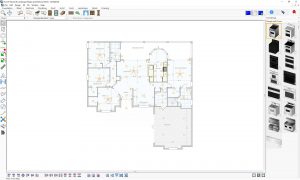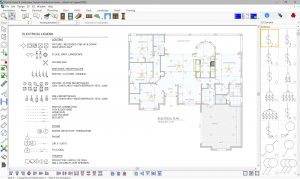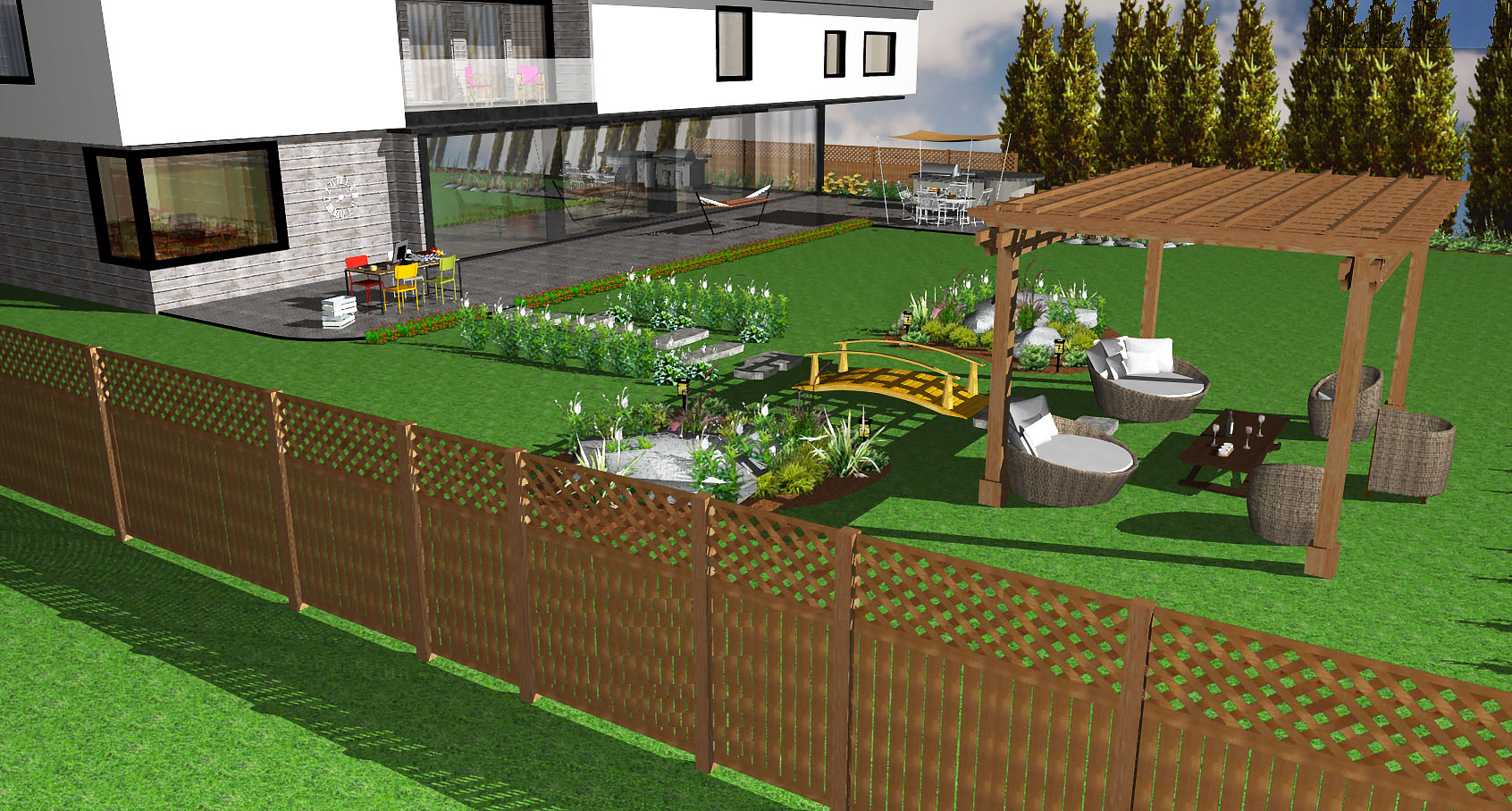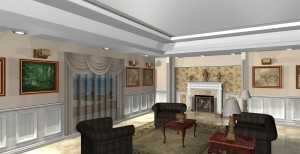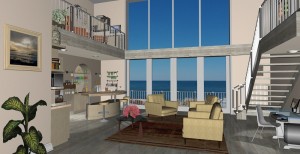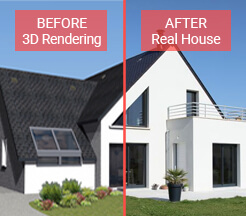Design a wiring diagram with Architect 3D
It’s never easy to get started within a field of expertise in which you don’t have everything down to perfection. In fact, designing an electrical wiring plan for a new construction, or redesigning an electrical installation that is already in place can prove complicated if you know next to nothing about electricity. However, our software program, Architect 3D, makes designing wiring diagram both incredibly simple and easy. In just a few clicks you will have wall sockets, switches, and much more installed. Our tools are there to facilitate the task and to prevent you from incurring additional fees on your final invoice. Simply draw out your plans, floor by floor, inserting your requirements and constraints!
What is an electrical plan?
The architectural electrical plan (also referred to as the architectural wiring diagram) is a way to express your electrical requirements, based on the architecture of your home. It contains all the appliances and electrical devices that you need, along with their locations (appliances, power outlets, switches etc.). And once all of the elements have been positioned and the electrical wiring is in place, your plan is ready, and you can share it with your electrician or indeed install it yourself. We strongly recommend that you call in a professional if you are not an expert in the field. In fact, you can put yourself at risk, or place your entire build in danger if the installation is poorly executed.
How do you create an electrical plan?
Where to start? Design the plan for your home
The starting point for your electrical wiring plan is the plan of your home. In actual fact, before installing any fixtures, you must design the entire plan for your home or construction, floor by floor.
And then? Manage requirements and constraints
Once you have your plan, you must determine your requirements and constraints for each of the rooms in your build:
Lighting: position your pendants, lamps, ceiling lights, wall fittings etc.
Specific installations: electric blinds, air conditioning, alarm system etc.
Household appliances: oven, refrigerator, hob, washing machine etc. (some appliances require special sockets).
Network: decide where you want to position a television, a landline, or a Wi-Fi router.
Switches: position these based on where you want to switch things on/off.
Power outlets: electrical sockets.
Exterior: carefully consider your exterior elements that will require an electrical connection, such as garden lights, outdoor sockets, or even your electric gate.
Heaters, hot water tanks, mechanical ventilation system etc.
Take legal constraints into account
When designing the electrical wiring plan, you must consider your own requirements and constraints, but also the constraints imposed by the law.
In the UK, the regulations for electrical installations are laid out in the BS 7671 standard, also known as the “Wiring Regs” or the “Big Blue Book”. BS 7671 applies to circuits supplied at rated voltages up to 1000 volts AC or 1500 volts DC, thus covering the Extra Low Voltage range (0-50V AC, 0-125V DC) and the Low Voltage (LV) range (50-1000V AC, 125-1500V DC). Now in its 18th edition, requirements and stipulations of BS 7671 include:
- Criteria are defined for risk assessment against transient overvoltage
- A colour coding system is specified to enable the identification of conductors in electrical installations
- All 13 A socket outlets in a dwelling are required to be RCD protected
- Socket-outlets other than a SELV socket-outlet or a shaver supply unit are not permitted within 3 m horizontally from the boundary of a splash zone in a bathroom or kitchen (referred to as zone 1). In all other cases, only the general rules apply, in that equipment shall be of a design appropriate to the situation in which it is to be used or its mode of installation shall take account of the conditions likely to be encountered.
- Consumer units and similar switchgear assemblies in domestic premises must be manufactured from non-combustible materials or to be enclosed in a cabinet constructed from non-combustible materials
- Where mobile equipment is likely to be used, provision shall be made so that the equipment can be fed from an adjacent and conveniently accessible socket-outlet, taking account of the length of flexible cable normally fitted to portable appliances and luminaires
- Reasonable provision shall be made in the design and installation of electrical installations in order to protect persons operating, maintaining or altering installations from fire or injury
- The regulations also provide guidance on the number of sockets to be included in rooms, based on the type and size of the rooms.
To ensure compliance with BS7671 regulations, a qualified electrician must complete an appropriate electrical inspection and testing procedure. This will include visual inspection and testing, to be carried out using appropriate testing equipment. Furthermore, BS 7671 Regulation 621.1 states that “where required, a periodic inspection and test of every electrical installation shall be carried out in accordance with regulations 621.2 to 621.5 in order to determine as far as reasonably practicable, whether the installation is in a satisfactory condition for continued service.” With all this in mind, it is essential that your electrical installation is well planned, taking all legal requirements into account.
Architect 3D tools: 3D objects, 2D symbols, legends, title blocks
Architect 3D allows you to design your home plan in 2D and 3D, including your wiring diagram. You have at your disposal a library of household appliances (dishwasher, tumble dryer, oven etc.) and electrical symbols (power outlet, switch, radiator etc.), thus allowing you to position the elements you need in whichever rooms you want, and model all your preferences. Architect 3D even allows you to design outdoor spaces, taking all constraints into consideration. The tools are easy to use and allow you to create your plans quickly, without any need for specific prior knowledge within the field of expertise.
The Architect 3D software application offers the ability to create and personalise a legend for your electrical symbols when creating your wiring diagram. You can thus determine what each symbol corresponds to, while visualising your home plan.
Another very practical feature of Architect 3D: the insertion of title blocks. These title blocks allow you to create presentations for your designs, with a professional quality finish. You can insert frames around your plans with a view to entering information, such as the name of a company or the contact details. You can create the frame yourself from scratch, or alternatively drag and drop one of the templates provided in the object library.




